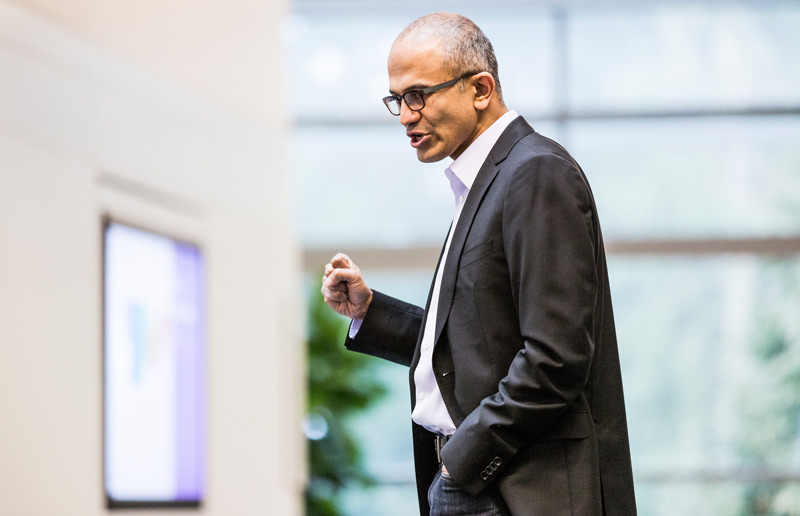Meet the new guy: he sounds just like the old guy.
In his first public comments as Microsoft CEO, Satya Nadella spoke in a way that very closely resembled his predecessor, Steve Ballmer. Whether that’s a good first sign or a bad one depends, of course, on whether one believes that Microsoft is generally on the right track or that it needs instead to be shaken up.
Answering questions from Susan Hauser, corporate vice president of the worldwide enterprise partner group, Nadella reiterated in the webcast what Ballmer has identified.
Though Nadella’s stage demeanour appeared more urbane than that of Ballmer, whose manic exhortations at company meetings were notorious, the basic message was the same. In a nutshell: Microsoft is morphing its focus from providing packaged software to providing devices and cloud services, so it must innovate with a strategy that places mobile and cloud first.
As part of this strategy, Microsoft is focusing on meeting the needs of its end users both at home and at work, thus embracing the ‘bring your own device’ (BYOD) trend. The common element at the centre of the company’s success remains software, which will determine the quality and uniqueness of those devices and services, he said.
The key for future success is for Microsoft to identify what technologies and products it has the resources and knowledge to create that no one else in the industry is able to replicate, Nadella said.
“That’s the focus we’ll bring to our execution,” he said.
It is a message he also laid out in a letter he wrote to Microsoft employees today, in which he said: “As we look forward, we must zero in on what Microsoft can uniquely contribute to the world. The opportunity ahead will require us to reimagine a lot of what we have done in the past for a mobile and cloud-first world, and do new things. We are the only ones who can harness the power of software and deliver it through devices and services that truly empower every individual and every organisation.”
Hauser did not ask any probing or uncomfortable questions, and a Microsoft spokeswoman said via email that the company has no plans to hold a press conference with Nadella just yet.
That Nadella is sticking so close to the Ballmer script should come as no surprise. If the board had wanted a new CEO that shook Microsoft’s foundations, it would not have chosen an insider who has been with the company 22 years.
However, Ballmer himself said, when explaining his reasons for stepping down from Microsoft, that he decided to retire after becoming convinced only a new leader would be able to accelerate the pace of change in the company.
Now that he has been given the keys to the Microsoft juggernaut, it is up to Nadella to prove that he can drive it faster than Ballmer, and down some new roads.
He’ll have a part-time co-driver in co-founder Bill Gates, who is stepping down as board chairman to take on a role as technology advisor. In a video released Tuesday (4 February), Gates said he will devote one-third of his work time to Microsoft, more than he has been devoting to the company in recent years.
For now, there are some areas that clearly will require close attention from Nadella, including Windows 8, which needs further refinement; the Surface tablet, still a work in progress; the upcoming integration of Nokia’s smartphone business; and the nagging displeasure of long-time investors peeved at the company’s stagnant stock price.
Juan Carlos Perez, IDG News Service







Subscribers 0
Fans 0
Followers 0
Followers